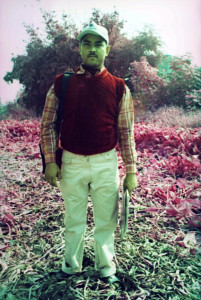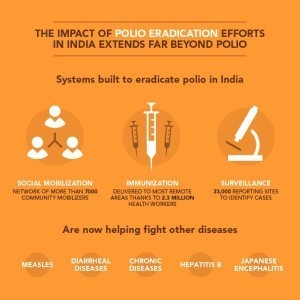Dan Morrison's Blog
July 20, 2024
The Prince and the Poisoner at the Chelsea Library
I’ll be signing book and talking biocrime at the Chelsea Library in London on August 3. Come on down!
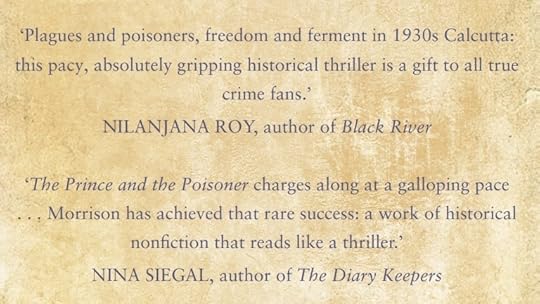 https://www.eventbrite.co.uk/e/the-prince-and-the-poisoner-the-murder-that-rocked-the-british-raj-tickets-946240419567: The Prince and the Poisoner at the Chelsea Library
https://www.eventbrite.co.uk/e/the-prince-and-the-poisoner-the-murder-that-rocked-the-british-raj-tickets-946240419567: The Prince and the Poisoner at the Chelsea Library
July 18, 2024
The Prince and the Poisoner
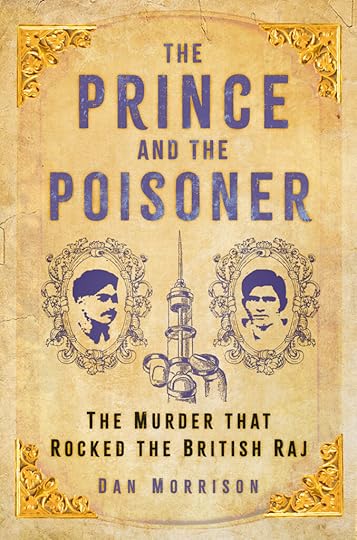
“Plagues and poisoners, freedom and ferment in 1930s Calcutta: this pacy, absolutely gripping historical thriller is a gift to all true crime fans.” – Nilanjana Roy, author of Black River
“Dan Morrison has unearthed a fabulous true crime story and embedded it within a fascinating work of micro history. David Grann has competition.” – Robert Twigger, author of Walking the Great North Line and Red Nile
“Right out of the gate, Dan Morrison’s thrilling narrative of greed, fratricide, and early 20th century forensics, The Prince and the Poisoner, charges along at a galloping pace. Synthesizing deep research with masterful storytelling skills, Morrison has achieved that rare success: a work of historical nonfiction that reads like a thriller. Your jaw may drop at what happened here, but you won’t want to look away.” – Nina Siegal, author of The Diary Keepers
June 12, 2014
Bangladesh Holds Back the Sea
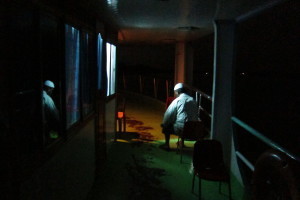 Here’s how Bangladesh took a hammer to extreme poverty in some of its poorest districts, for the low price of $12 a year per resident. The program is also the country’s first line of defense against global warming and rising seas. Read it in POLITICO Magazine, or the Dhaka Tribune.
Here’s how Bangladesh took a hammer to extreme poverty in some of its poorest districts, for the low price of $12 a year per resident. The program is also the country’s first line of defense against global warming and rising seas. Read it in POLITICO Magazine, or the Dhaka Tribune.
January 16, 2014
How India Beat Polio
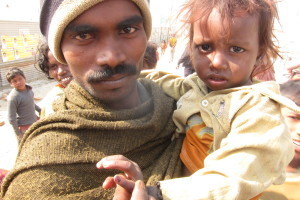 Khagaria, India – When he thinks about polio, Dr. B.N. Singh recalls the surgeries.
Khagaria, India – When he thinks about polio, Dr. B.N. Singh recalls the surgeries.
“It was ghastly,” Singh said of his early days as a surgical orthopedic resident practicing in the Indian state of Bihar. “Every week I was doing five to six operations for polio deformities.”
This was in the late 1960s, when polio was a miserable fact of life in countries around the world. India alone had hundreds of thousands of new cases of Poliomyelitis each year.
These amounted to armies of children who faced lives of extreme hardship. The operations Singh performed didn’t so much cure their paralysis as reshape their withered limbs “from very bad to not-so-bad,” he said. The surgeon’s knife might transform a child from an invalid, with no chances of education, a job and, eventually, marriage, into someone who could move about their village with the aid of crutches or a hand-cranked wheelchair. It was something.
Throughout the 1990s, as India’s economy and ambitions grew, and into the 21st Century, Singh and his colleagues would every year donate their time to “polio deformity camps,” in which poor parents would bring their stricken children hundreds of miles for a chance at a free operation. “We’d do 40 to 50 surgeries a day,” Singh, who personally has performed as many as 400 such operations, recalled. “It was a drop in the bucket.”
But in 2005 the deformity camps suddenly stopped.
“We couldn’t find any more cases,” Singh said. “From where we were then, to where we are now – it’s incredible.”
At midnight on January 13, India reached a stunning milestone: three years without a single new case of polio. This nuclear-armed power, where fewer than half the population has access to toilets, has beaten one of the world’s most pernicious communicable diseases.
To get a sense of just how momentous this is — how India eliminated a disease that thrives on the very unsanitary conditions that still prevail here – I accompanied a Unicef team to Khagaria, a poor district in rural Bihar that lies among a web of flood-prone rivers. Khagaria was once so remote that its original name, Farakiya, means “apart” or “impenetrable” in Urdu.
Even today, at the height of the dry season, it can take several hours traveling by a four-wheel-drive, two separate boats, and a motorcycle to reach the village of Mohra Ghat, just 15 miles from the main town. This hamlet of 1,600 people is maybe the last place you would expect to find a functioning public health system. There’s no electricity, no sanitation, a low literacy rate — and one of the two local doctors is an untrained quack.
But here’s Pradeep Kumar Jha, a 28-year-old part-time health worker, armed with a 10th-grade education and a ledger listing the vital statistics of every mother and child in the village.
Jha’s title is community mobilization coordinator: It’s a job that requires the skills of both a cheerleader and a sergeant-major as he tracks local births and counsels parents to make their children available for routine immunizations — including repeated periodic doses of oral polio vaccine.
He’s a jack of many trades: Jha farms wheat and mustard on four acres nearby and, as a member of the priestly caste, he performs Hindu rituals on special occasions, “but this is by far my favorite thing to do,” he said.
Every village, hamlet, and city block in India — a country of 1.2 billion people, many of them in the deepest of poverty, speaking more than 1,600 languages — has someone like Jha, armed with the same ledger and the same zeal. (Jha is something of an outlier: most community mobilization coordinators are women.)
India’s apparent victory against polio (the World Health Organization is expected to certify the achievement in March) has coincided with more than 20 years of public health improvements. Child mortality has fallen 46 percent since 1990.
But the polio effort isn’t merely part of a general trend. It began in the 1990s when members of the Rotary International launched a massive lobbying effort to convince skeptical policymakers that polio could in fact be eradicated.
With money raised by Rotary ($178 million to date), India began vaccinating hundreds of millions of children. Twice a year, 2.3 million vaccinators administer polio vaccine drops to every child younger than five. That’s 172 million kids in the fields, at school, in slums, on moving trains, and in the temporary shelters of migrant workers and traditional nomads. (The polio effort has been fully funded by the Indian government since 2007.)
These national immunization days are followed up with additional polio rounds in the 107 poor districts in Bihar and Uttar Pradesh states where poor sanitation, low incomes, and high population density favor polio transmission. Comprehensive doesn’t begin to describe it.
“Awareness has gone up,” Usha Kumari, a 26-year-old village birth attendant in Mohra Ghat, told me. “People are more comfortable with vaccinations now. That’s that best part – seeing how people’s behavior has changed.”
There were setbacks, some of them big, but the work paid off.
Ten years ago, Khagaria district had seven cases of polio, followed by none in 2005 and just one in 2006. Then came Bihar’s worst season of flooding in 30 years. Between August 2007 and December 2008, the swollen Kosi River and other waterways shifted course, by miles in some places, wiping out villages and towns. Aid workers described scenes of stranded women giving birth on muddy roadways amid the bodies of the drowned and the dying.
In the wake of this disaster, the number of polio cases in Khagaria shot up again, to 16 in 2007, 22 in 2008, and 16 in 2009.
But there hasn’t been a single polio diagnosis since. The volunteers, doctors, nurses, and midwives went back to work. The last child from this area to be afflicted with polio was an 18-month-old girl named Sahjadi Klim, who was diagnosed in September 2009, according to Unicef. The last known infection in all of India was that of a little girl living near Kolkata named Rukhsar Khatun, who was diagnosed on January 12, 2011.
Rukshar’s parents are giving lots of interviews these days. After all, she’s the last one.
This first appeared at National Geographic.
January 15, 2014
India’s Massive Blackout, and the Environmental Danger to Come
March 4, 2013
The world’s biggest mass gathering draws artists and epidemiologists
March 3, 2013
The world’s biggest mass gathering draws artists and epidemiologists
Two very different reports from my visit to the recently-concluded Maha Kumbh Mela in Allahabad, India, where tens of millions of pilgrims immersed themselves at the confluence of the Ganges, Yamuna, and (invisible) Saraswati rivers. For the New York Times, I looked at how India was able to eliminate of polio, using the Kumbh as a backdrop for this massive public health effort. And at Artforum, I looked at how artists approach this biggest of human gatherings. More soon.
February 28, 2013
Pangolin Soup, Wrestling for Peace, and Chasing Microbes
Pangolin Soup, Wrestling for Peace, and Chasing Microbes
Three from the NatGeo blog: On the trail of endangered pangolins from Africa to restaurants in China; wrestling as peacebuilding in South Sudan; and an unprecedented scientific investigation into neonatal death in Bangladesh, India, and Pakistan.

